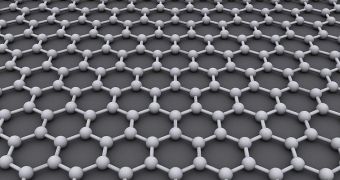One would think that different technological products would need different materials to work, but graphene has established itself as a universal means of taking science to the next level.
The material is being considered for super-fast processor, ultra high-capacity storage products, various other applications and, now, very fast wireless connectivity.
Indeed, Researchers at Georgia Tech believe they can make wireless networking antennas from atom-thin sheets of carbon (graphene).
They think that transfers of onee terabit per second could be done at a range of about one meter.
One might think the range is a bit short, and they would be right, but this disadvantage is bound to be addressed over time.
The speed is key, though. As MIT Technology Review skillfully points out, one terabit per second would allow 10 HD movies to be transferred to a PC, Smart TV or whatever else in just one second.
Add to that the theory that 100 terabits per second are theoretically possible and there is no reason not to develop graphene antennas as quickly as possible.
The only possible problem here is that the processing units of the devices, and their storage units, won't be fast enough to keep up with the transmission.
In other words, scientists will have to make graphene CPUs and storage units before graphene antennas become useful, since no other material can handle the speed.
“It’s a gigantic volume of bandwidth. Nowadays, if you try to copy everything from one computer to another wirelessly, it takes hours. If you have this, you can do everything in one second—boom,” says Ian Akyildiz, director of the broadband wireless networking laboratory at Georgia Tech.
To make an antenna, the group say that the sheet of carbon (one atom-thick) can be shaped into narrow strips between 10 and 100 nanometers wide and one micrometer long. Electromagnetic waves in the terahertz frequency would then interact with plasmonic waves (oscillations of electrons at the surface of the graphene strip) to send and receive information.
It will take years for the necessary signal generators and detectors, amplifiers, and filters to be made, especially at such a small scale (manufacturing will be a pain to figure out), but at least there is a goal in sight now.

 14 DAY TRIAL //
14 DAY TRIAL //